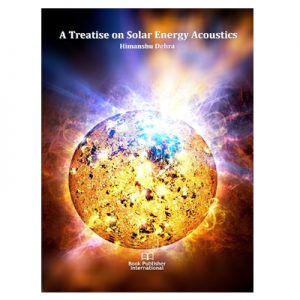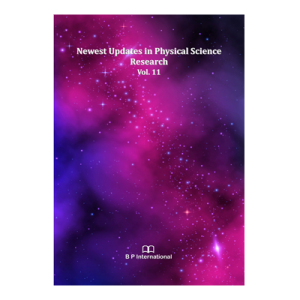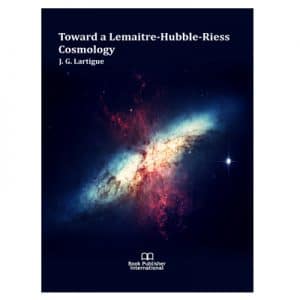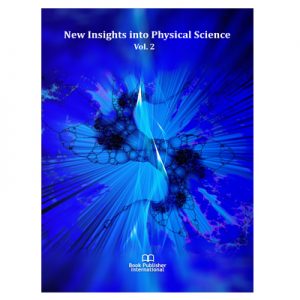The edition 2022 of the book « Plasmas afterglows with N2 for surface treatments– Edition 2» adds 9 chapters to the previous 9 chapters of the edition 2021.The contents of the present edition recalls the first 9 chapters before the chapters numbered from 10 to 18. Details on Chapters 10 to 17 are given in the present preface.
Chapter 10 considers the Active species in R(He,Ne,Ar)- molecular gas plasmas. In high pressure He glow discharges, the 3- body reactions of He (23S) metastable atoms and He+ ions with He and N2 are in competition to excite the N2+( B,0) radiative states. With [He+]<1010 cm-3 and [He(23S)] ~ 1012 cm-3 as found in a DC glow discharge, it is estimated that the 3-body reaction He (23S) + He+ N2 was the dominant process. By using the actinometry method with Ar and Ne impurity in N2-H2 DC glow discharge at 5 Torr, it was found in the negative glow of the DC discharge a small increase of all N2 vibrational states and of cathode temperature as a few H2 was introduced into N2. Finally, it is discussed the methods to obtain the plasma gas temperatures from the rotational structures of N2, CN, OH, H2 and O2 radiative states
Chapter 11 concerns the Plasmas afterglows in N2-O2 discharges. It was found that the variations of N and O-atoms density versus the O2 percent from 1 to 4% into N2 in HF flowing afterglow (at 7 Torr, 0.5 slpm, 150 W) was strongly decreasing for N-atoms from 15 to 2 1014 cm-3 and kept a nearly constant value for O-atoms : 7-9 1014 cm-3, a value higher than the N-atom density in the range 2-10% O2 into N2. In RF afterglows, it was studied the effect of O-atoms and O2 molecules when O2 was introduced before or after the N2 plasma (8 Torr, 1slpm, 100 W). It is concluded to a quenching of N2 active species by O-atoms more effective than with O2 in the early and late afterglows. At N2 atmospheric gas pressure of DBD and Corona plasmas with O2 impurity, it has been detected the N2O1S excimer with a density equal to about 1012 cm-3, largely less than the N and N2(A) densities : (5-7) 1014 cm-3.
Chapter 12 gives results on the Determination of N and O-atoms, of N2(A) and N2 (X,v>13) metastable molecules and N2+ ion densities in the Ar-N2 afterglows jets of microwave discharges. The N and O atoms, the N2(A) and N2 (X,v>13) metastable molecules and N2+ ion densities are determined after calibration by NO titration for N and O-atoms and measurements of NO and N2 band intensities. For an Ar-xN2 gas mixture with x increasing from 2 to 100% at 4 Torr , 100 Watt and an afterglow time of 3 10-3 s at the 5 liter reactor inlet, it is found densities in the ranges of (2-6) 1014 cm-3 for N- atoms ,one order of magnitude lower for N2(X,v>13) and for O-atoms (coming from air impurity) , of 1010-1011 cm-3 for N2(A) and of 108-109 cm-3 for N2+.
Chapter 13 is an extension of chap.2, 4, 6 of the 2021 book and of chap.12 of the present book. It gathers the results obtained on the N , H and C-atoms density in flowing afterglows of microwave R/N2-H2 and R/N2-CH4 discharges with R=N2, He, Ar and applications to TiO2 surface nitriding. Variations of N,H and C-atoms density have been determined along the reduced pressure flowing afterglows of microwave R/N2-H2 and R/N2-CH4 discharges with R=N2, He and Ar. Density of H and C-atoms and other nitrogen active species such as N2(A), N2(X,v>13), N2+,NH, N(2D) , CN were obtained from that of N-atoms ,between early and late afterglows. In addition, it has been obtained the density of O-atoms and NO molecules coming from air impurity. It has been deduced the wall destruction probability of H, O and C-atoms on the quartz afterglow tube: yHR,N2 = (1-3) 10-3, yOR,N2 =(0.4-1) 10-3 and yCN2 =(0.7) 10-3. The effects of H and C –atoms on N-atoms inclusion inside TiO2 surfaces are reported.
Chapter 14 is devoted to the Radial distributions of active species in plasmas and afterglows. The radial distributions of plasma and afterglow radiative species has been first analysed with an optical fiber of 1mm dia. giving a detected light resolution of about 1 cm at a 10 cm distance to record he N2 long time afterglow (LA-10-2 s) in a large volume reactor (5 liters). At pressure of 6-8 Torr, flow rate 0.5-1 slpm, the LA-10-2 s was a jet of dia. 2 cm with densities of N-atoms and N2(X>13) metastable molecules of 1015 and 5 1014 cm-3, respectively. By putting a horizontal slit of 50
in front of the dia.1 mm optical fiber, a light beam of 1 mm dia. was detected across an afterglow tube of 2 cm dia. In a N2 RF plasma at 8 Torr, 1 slpm, 100 W. Bessel and flat profiles were recorded in the pink and late afterglows depending on full or partial destructions of radiative species on the tube wall. A 1 mm radial profile was also obtained with a collimator set at the tip of a 1 mm optical fiber and moved across the axis of a surface wave (SW) Ar plasma of 2 cm dia. at 600 MHz, 0.1 Torr, 2W. The radial profiles of Ar metastable atoms which are produced by high energy electrons near the tube wall and destroyed by low energy electrons in the tube volume have allowed to determine an electron metastable excitation CM = (1-5)10-11cm3s-1 and de-excitation CM= (1-3)10-7cm3s-1 rates . A 3D spatial distribution of the intensity of the optical thin ArI549.6 nm line was measured in DC and SW plasma columns of 2 cm dia. at 150 mTorr.. Bessel-type radial distributions were found in the Ar DC positive column and more rounded profiles in the Ar SW plasmas at 600-900 MHz, with hollow shapes at the plasma end.
Chapter 15 reports the results on Time varying plasmas and afterglows for surface treatments. Time varying discharges and afterglows have been studied in Ar, He and N2 gases for several types of discharge structures (DC , RF , DBD , magnetron) at different gas pressures from a few 10-3 Torr to the atmospheric gas pressure. In DC and RF plasmas, it has been discussed the effects of reactions in long time (10-3 s ) and short time (10-6 s ) afterglows between metastable ( N2,A) molecules in the excitation of N2(C,v=1) and between metastable (ArM) atoms in the excitations of Ar high radiative levels. In He DBD plasmas at atmospheric gas pressure, the OH(A) radiative emissions resulted from 3 body collisions with He+ ions and HeM metastable atoms on H2O in impurity. N2(A) were at the origin of NO* , N2O* emissions in air impurity. Strong emissions of Ti + and O – atoms (when O2 was added to Ar) in short time (10-6 srange), low Ar pressure (10-3 Torr) pulsed DC magnetron plasmas were associated to hard TiO2 coatings.
Chapter 16 brings results on Remote plasmas CVD and Reactive sputtering in magnetron plasmas to the determination of B-atoms and Ce-atoms absolute densities. The B-atoms density were obtained in a remote CVD Ar-BCl3 microwave plasma. At the Ar-l.5% BCl3 plasma end, the B-atom density nearly reach 10 15 cm 3, which corresponds to a BCl3 dissociation degree of about 30%. It was observed the reactions of B-atoms on O2 desorbing from the tube wall after B-atoms collisions.
The resonant absorption was applied to Ce – atoms produced in a DC magnetron sputtering of a Ce cathode. In pure Ar plasmas, the Ce density was 1.5 108 cm-3. By introducing O2 in the Ar plasma, it was observed an hysteresis effect of Ce density following the plasma voltage.
Chapter 17 is devoted to Treatment of textiles in plasma afterglow, in N2 and O2 microwave afterglows where the N and O-atoms are the dominant active species. The hydrophilicity of the wool (a chosen hair sample) was found to change from hydrophobic to hydrophilic states after 2 minutes of N2 afterglow treatment at 4 Torr, 1 slpm, 100 Watt. It has been observed a colour change from white to magenta of a textile blended with a cupper wire after a N2 and O2 afterglow treatment for 40 minutes. The whool treatment has conduced to a sensitive shrinkage lowering.
Chapter18 revisites the kinetic processes allowing to determine the N-atom density in high Ar-N2 gas pressure microwave afterglow. First, it is observed that pure pink afterglows are mainly obtained at high pressures up to atmospheric gas pressure. Second, it is discussed on the uncertainty of the k- rate coefficiant in the range k=10-11 – 10-12 cm3s-1 for the reaction N2,X(v>13) + N2(A) N2(B,v)+ N2 An enhancement of the N2(B,v’=8) / N2(B,11) density ratio is observed up to the atmospheric gas pressure. It was interpreted by a reduction of the quenching of the N2(B,v’=8) states by Ar.
Values of the N+N recombination rates on the N2(B,11) states were determined when the N+N part was clearly established, that is aN+N > 0.1. It was found that kN11 increased by about 3 from pure N2 to Ar-(20-33%)N2, contrary to the case of pure late afterglow at low gas pressure (8 Torr) where they decreased by about the same factor.





